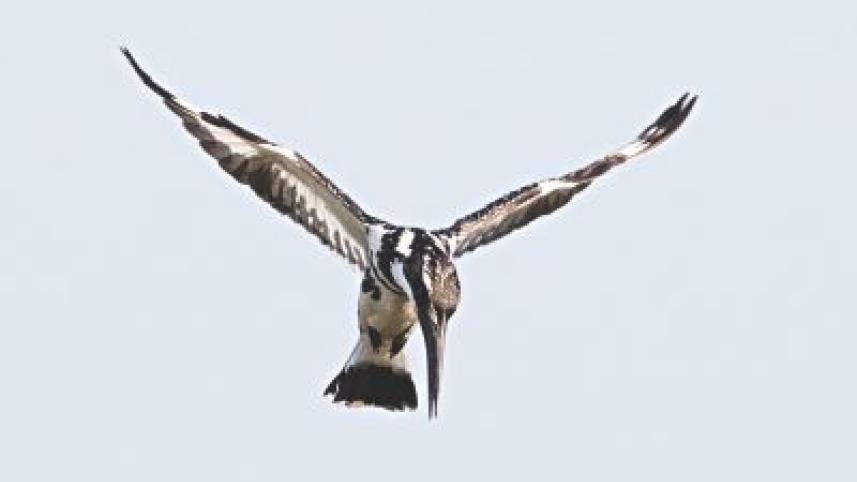Hovering Birds

Some years ago I was birding in the National Botanical Garden, Dhaka. The lush, beautiful Garden hosts many kinds of birds among its trees, bushes and grass. On that particular day I was watching the dhaira vines that grow quite tall wrapping themselves around larger trees. The bright orange dhaira flowers bloom profusely and draw smaller birds with their nectar.
A small dark bluish bird with a long beak - a purple sunbird - arrived and started flitting from flower to flower, inserting its beak to extract nectar. It perched – often precariously – as it drank the nectar, but there were some flowers its beak could not reach from perching position. So it rapidly flapped its wings to stay airborne, or hovered , while its beak reached into the flower.
I had seen photographs of hovering birds before: hummingbirds, which are found only in the Americas, are often pictured hovering. But this was the first time I saw one of our own birds doing this trick.
How does a bird hover? As you can guess, hovering needs a complex manoeuvre of wings. Hummingbirds and sunbirds have flexible shoulder joints that allow them to rapidly oscillate their wings to and fro in a particular pattern. This movement of the wings generates lift, a force that counters gravity and enables the bird to hover.
Since that day I have seen many other birds hovering. It takes birds a lot of energy to hover, so they do it for short periods to find food.
Pied kingfishers are well-known for their hovering. I encountered pied kingfishers in Purbachol, hovering over water, sometimes for several seconds, while looking for fish. Once they find prey they dive to catch it.
Baya weavers hover during nest-building. They are thorough and meticulous engineers, testing the strength of the nest as construction proceeds. They inspect the nest from the inside by entering it and spreading their wings to push the walls outward. From the outside, they often hover while examining the nest and figuring out what part needs work.
Among birds of prey, several species are known for hovering. The black-winged kite, one of our three kites, catches prey from fields. If it suspects the presence of prey, it will hover over the area for a closer look. In some cases it will descend and hover again, stretching out its talons for the kill as it gets closer to the ground.
Kestrels, our commonest falcons, also hover while looking for prey. Sometimes kestrels will take advantage of wind direction and fly into the wind at the same speed as the wind is blowing, thus remaining stationary and hovering without spending extraneous energy.
But you don't have to go very far to find hovering birds. I have seen three of our common birds – house sparrows, black drongos and bulbuls – hover. One does need patience to watch this, though, as it is a fleeting movement.
www.facebook.com/ikabirphotos or follow ihtishamkabir on Instagram



 For all latest news, follow The Daily Star's Google News channel.
For all latest news, follow The Daily Star's Google News channel.
Comments